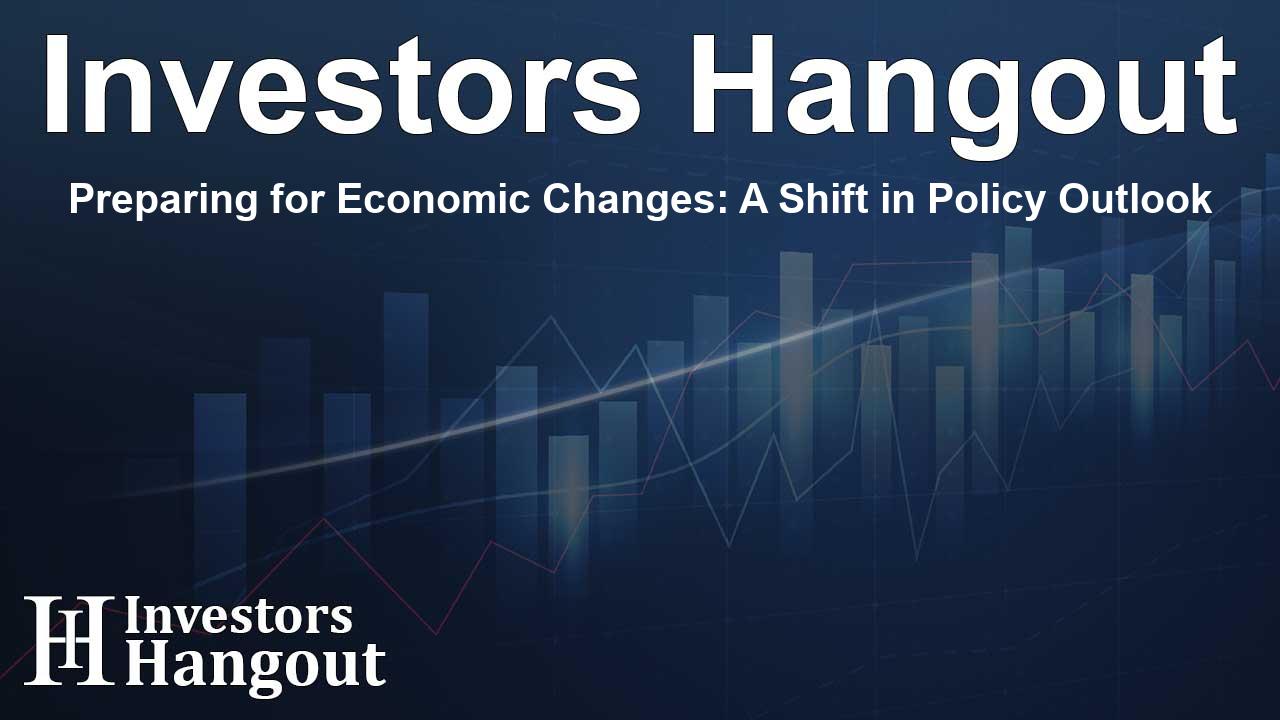Preparing for Economic Changes: A Shift in Policy Outlook

Preparing for Potential Economic Shifts
As we navigate through what seems to be a temporary economic slowdown, often referred to as "Run It Cold", the outlook for investors and policymakers is shifting rapidly. This situation might pave the way for changes leading up to a potential "Run It Hot" policy closer to 2026, a term tied to fiscal strategies ignited during periods of economic recovery.
Understanding the Current Economic Landscape
The current state of the US economy showcases that the labor market has been adding only around 35,000 jobs per month over the last few months. This dismal figure signals a red flag, suggesting we're in a precarious spot similar to past recessions. The observed stability may be misleading as the unemployment rate has only slightly increased, masking underlying weaknesses in job demand.
The Labor Market Dilemma
Despite the apparent low unemployment rate, the supply of labor is notably weak. If recent immigration policies had not altered the labor workforce dynamics, we could anticipate a significant jump in unemployment rates, potentially reaching 4.9%. Nonetheless, the current economic indicators signal a critical issue: the weak demand for labor indicates deeper underlying problems in the economy.
Challenges Facing the Cyclical Industries
Job creation rates have stagnated around an alarming annualized pace of 0.3% in various cyclical industries, including housing and manufacturing. The private sector appears to be in a hiring freeze, adversely affecting overall morale and economic momentum.
Analyzing Fiscal Trends
Recent fiscal data shows that the primary deficit tracker is currently at 1.54% of GDP. This lagging indicator implies that fiscal conditions are not improving as swiftly as anticipated, particularly in comparison to earlier years. Additionally, the emergence of tariffs, estimated at nearly $30 billion in one month alone, raises concerns about a potential fiscal drag of about $150 billion by year-end.
Implications of Fiscal Policies
Based on current projections, the primary deficit could reduce significantly from $1 trillion in 2024 to $850 billion in 2025. The growing concerns surrounding increased tax implications and economic deceleration emphasize the urgent need for strategic interventions to counteract these projections.
The Road Ahead: Future Predictions
Looking forward, we can expect several challenges, including stagnant hiring, lackluster consumer spending, and potential growth in tax burdens due to tariff consequences. The absence of immediate offsetting tax stimuli could further exacerbate these conditions, especially with the anticipated fiscal injection in 2026 coinciding with the mid-term elections.
Potential for a 'Run It Hot' Policy
If the Federal Reserve decides to cut rates under circumstances of elevated inflation, we may witness a rapid transition to a 'Run It Hot' economic environment. Historically, this economic maneuver has been employed during recovery phases, but things have changed. Previous instances were marked by stable inflation and independent Federal Reserve operations.
Investment Strategies for Uncertain Times
In such unpredictable landscapes, diversifying investments becomes crucial. A mixture of growth assets combined with what are now termed Policymaker Protest Assets (PPAs) might provide better security against erratic policy responses. These PPAs can include assets historically regarded as safe havens, such as gold, or even emerging digital currencies like Bitcoin.
Conclusion and Call to Action
As we adapt to rapidly changing economic conditions, remaining informed and strategic in our approach to investments is vital. In conclusion, while the near-term outlook appears cloudy with the "Run It Cold" policy, the potential for a "Run It Hot" environment exists as we approach 2026. A blend of traditional and innovative investment strategies may offer better resilience in these uncertain times.
Frequently Asked Questions
What does "Run It Hot" mean in economic terms?
"Run It Hot" refers to an aggressive fiscal policy approach intended to stimulate economic growth, often implemented during recovery periods.
How does the current job market impact the economy?
The slow job market growth indicates a potential economic weakness, impacting consumer confidence and spending power.
What are Policymaker Protest Assets (PPAs)?
PPAs are assets that serve as protection against unconventional policy measures, including those that distort real interest rates or affect long-term yields.
Why are tariffs important to the current economic outlook?
Tariffs can create fiscal drag, affecting government revenue and ultimately impacting the economy's overall health and spending ability.
What role might the Federal Reserve play in future economic policy?
The Federal Reserve is critical in shaping monetary policy, and its decisions on rate cuts can significantly influence economic conditions and market stability.
About The Author
Contact Thomas Cooper privately here. Or send an email with ATTN: Thomas Cooper as the subject to contact@investorshangout.com.
About Investors Hangout
Investors Hangout is a leading online stock forum for financial discussion and learning, offering a wide range of free tools and resources. It draws in traders of all levels, who exchange market knowledge, investigate trading tactics, and keep an eye on industry developments in real time. Featuring financial articles, stock message boards, quotes, charts, company profiles, and live news updates. Through cooperative learning and a wealth of informational resources, it helps users from novices creating their first portfolios to experts honing their techniques. Join Investors Hangout today: https://investorshangout.com/
The content of this article is based on factual, publicly available information and does not represent legal, financial, or investment advice. Investors Hangout does not offer financial advice, and the author is not a licensed financial advisor. Consult a qualified advisor before making any financial or investment decisions based on this article. This article should not be considered advice to purchase, sell, or hold any securities or other investments. If any of the material provided here is inaccurate, please contact us for corrections.
